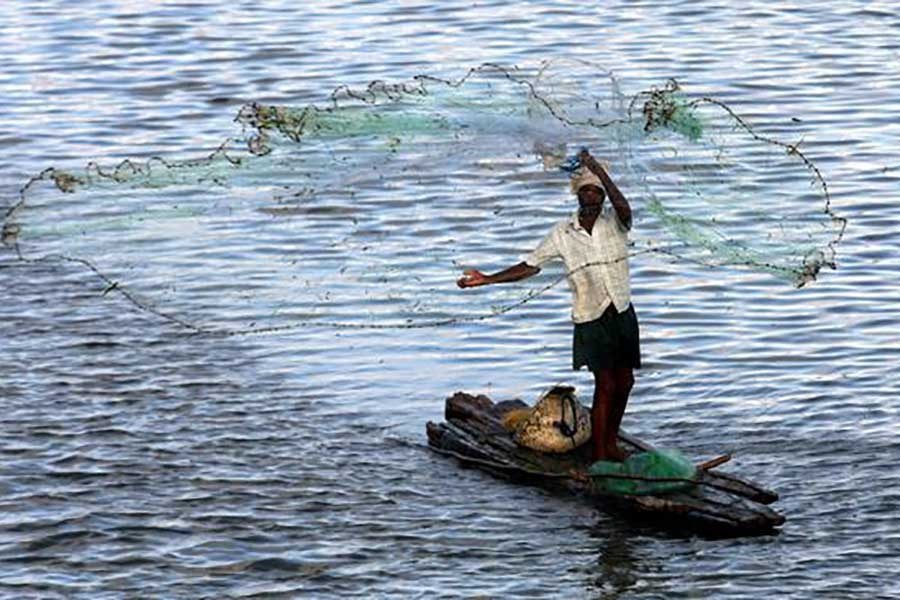At a time when local fish varieties have been depleting fast, the use of what is known as Gill or Current net has only expedited the process. To add to the danger, another fishing net called China net or Darki net has come to the scene. Although illegal and the authorities at times burn down seized Current nets, these small-mesh nets made of monofilament synthetic nylon fibre are too ubiquitously in use all over the country to be brought under control. Cheaper and highly effective to catch mother fish and fish fries alike, the net is naturally very popular among fishermen.
Now comes the China or Darki net to make a clean sweep of water bodies by trapping indigenous fish of all varieties with the tiniest of those not spared. Drum-shaped and made with quadrangular iron pieces in between circular iron frames this net is one to one and a half feet wide and 40-50 feet long. Its origin is in China where the Chinese farmers use these nets for killing different species of insects on their farms in order to save their crops. But people in this country found its use, better say abuse, for catching fish in a most destructive manner. If fish fries are caught so rampantly along with mother fish, the species will disappear soon.
As it happened in case of Gill or Current net, the drives launched occasionally against fishermen using it proved futile. Clearly, the sources had to be plugged. According to reports published earlier, in Munshiganj alone there are 500 factories, 200 of those large units, producing this pernicious net. If the factories -- wherever they exist -- were destroyed once and for all in the interest of protecting fish resources, no raids were required against the net at the field level. One cannot be blamed for sensing rat in the campaign against Current nets.
China net has already made an inroad into fishing of local varieties all across the country, threatening their existence. No reports on their sources are available as yet. But there have been a number of reports expressing concern about the disappearance of local fish as the net spares neither the young nor the grown-up fish. Unscrupulous fishermen are little aware that the wholesale fishing will destroy the local stock sooner than later. Once again, the district and upazila administrations in some areas are taking actions against the use of this killer net. But these are isolated incidents and do not address the problem at its roots.
The International Union for Conservation of Nature (IUCN) published its Red List of Threatened Animals in Bangladesh for the first time in 200. At that time 54 freshwater and brackish fish species were in the list of the 'threatened'. Of them 12 were listed as critically endangered, 28 endangered and 14 vulnerable. In its updated list it prepared in 2015, the threatened fish species rose to 64, nine of which were found to be critically endangered, 30 endangered and 25 vulnerable.
By this time, Bangladesh Fisheries Research Institute (BFRI) and the Department of Fisheries (DoF) have made possible the breeding of some local varieties of fish in hatcheries for their successful production in natural habitats.
This has been a highly celebratory achievement on the part of our local scientists. But such efforts will go in vain if the use of Current net and China net cannot be done away with. A concerted and serious effort is needed to bring an end to the supply sources -- both local production and import -- of the illegal nets. The factories will have to be done away with in order to save local fish species from extinction.


